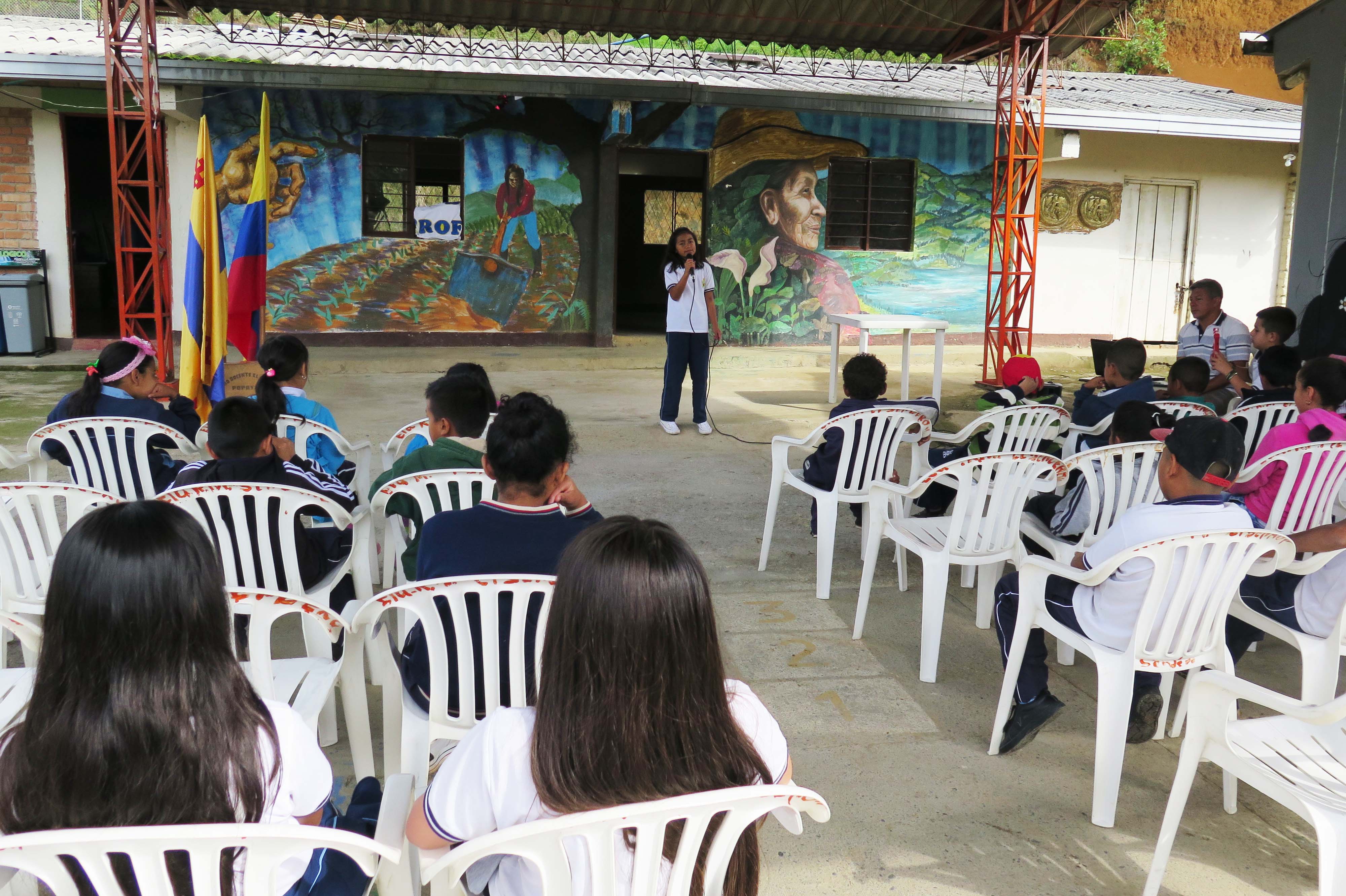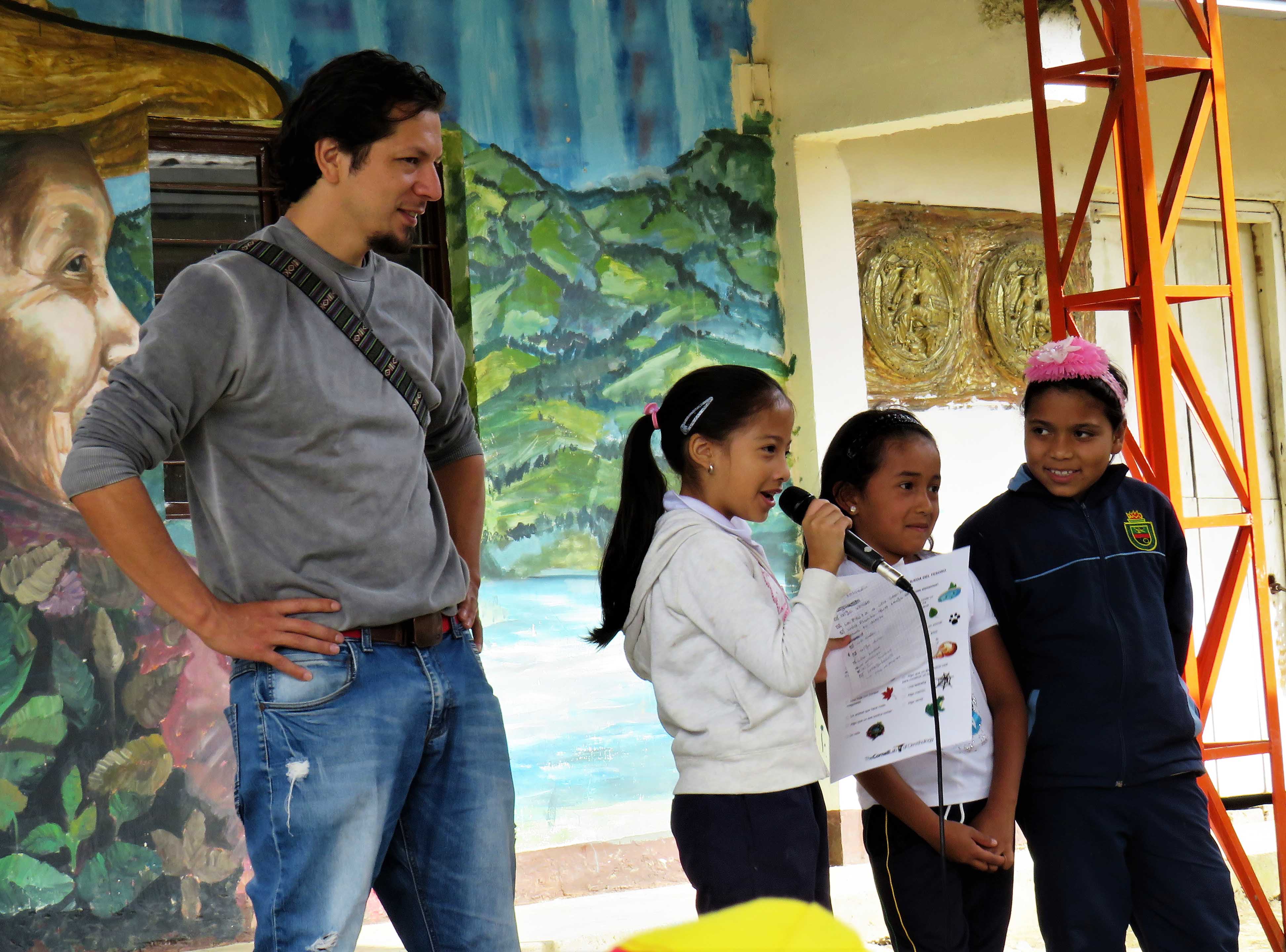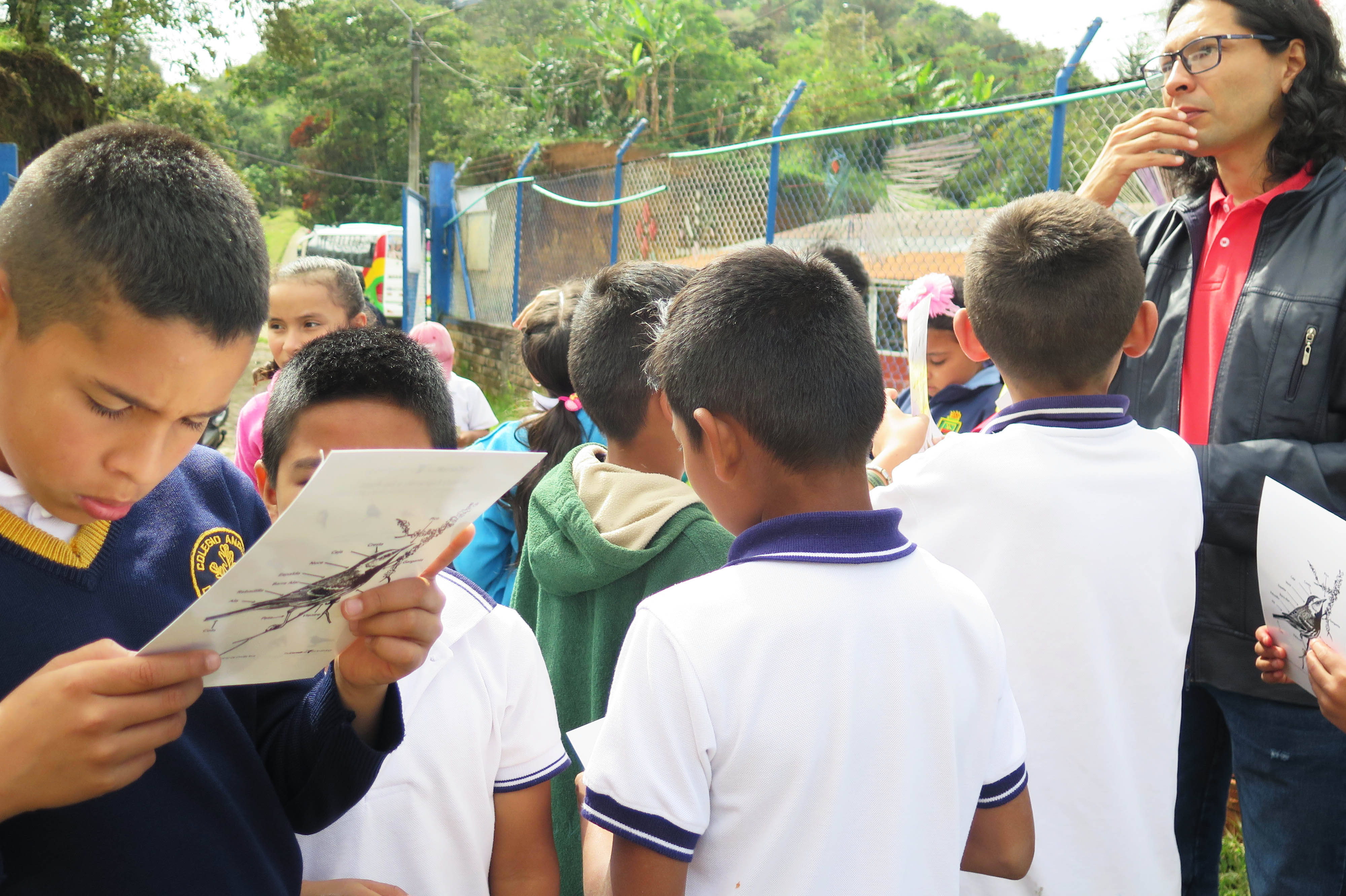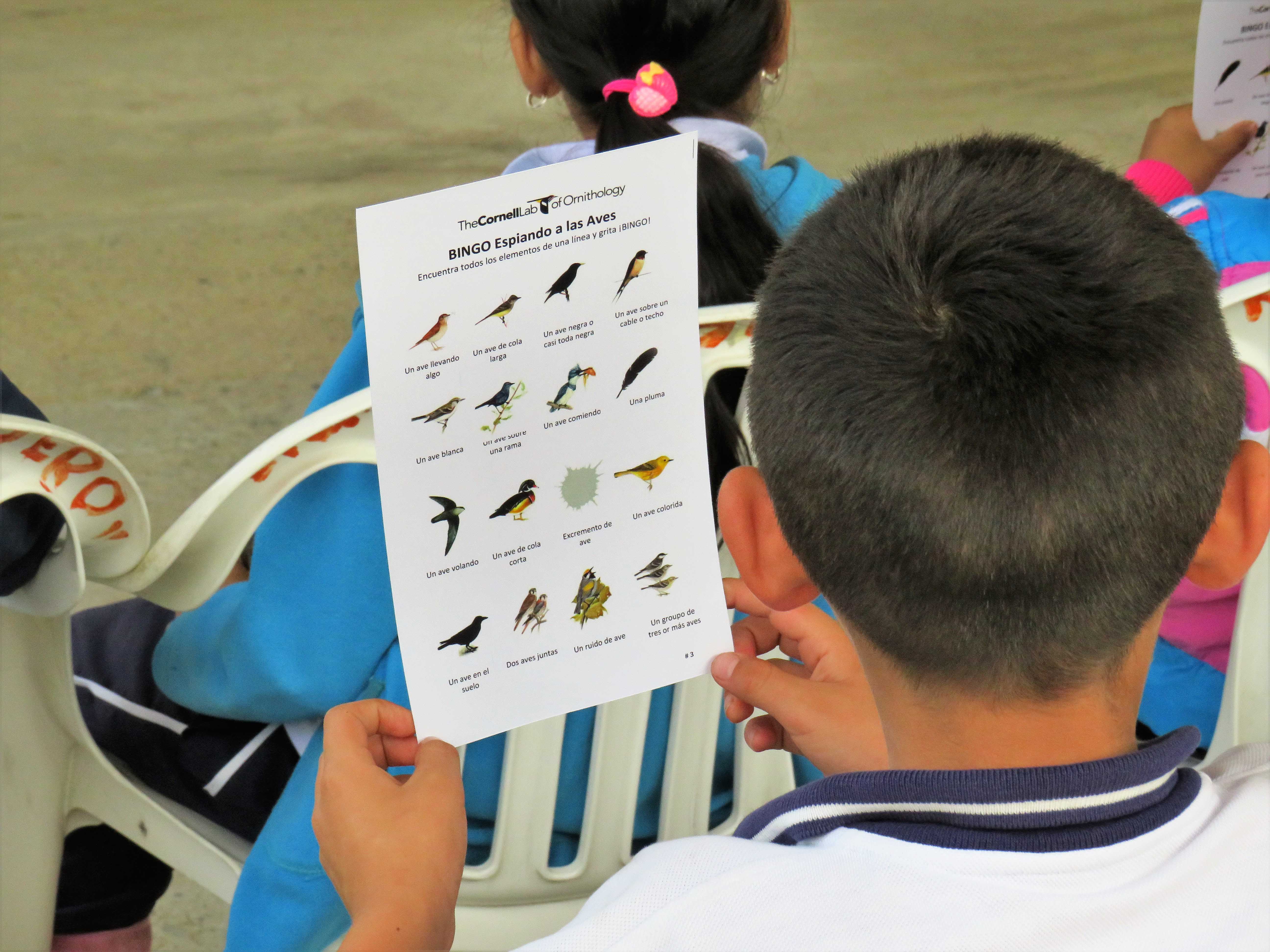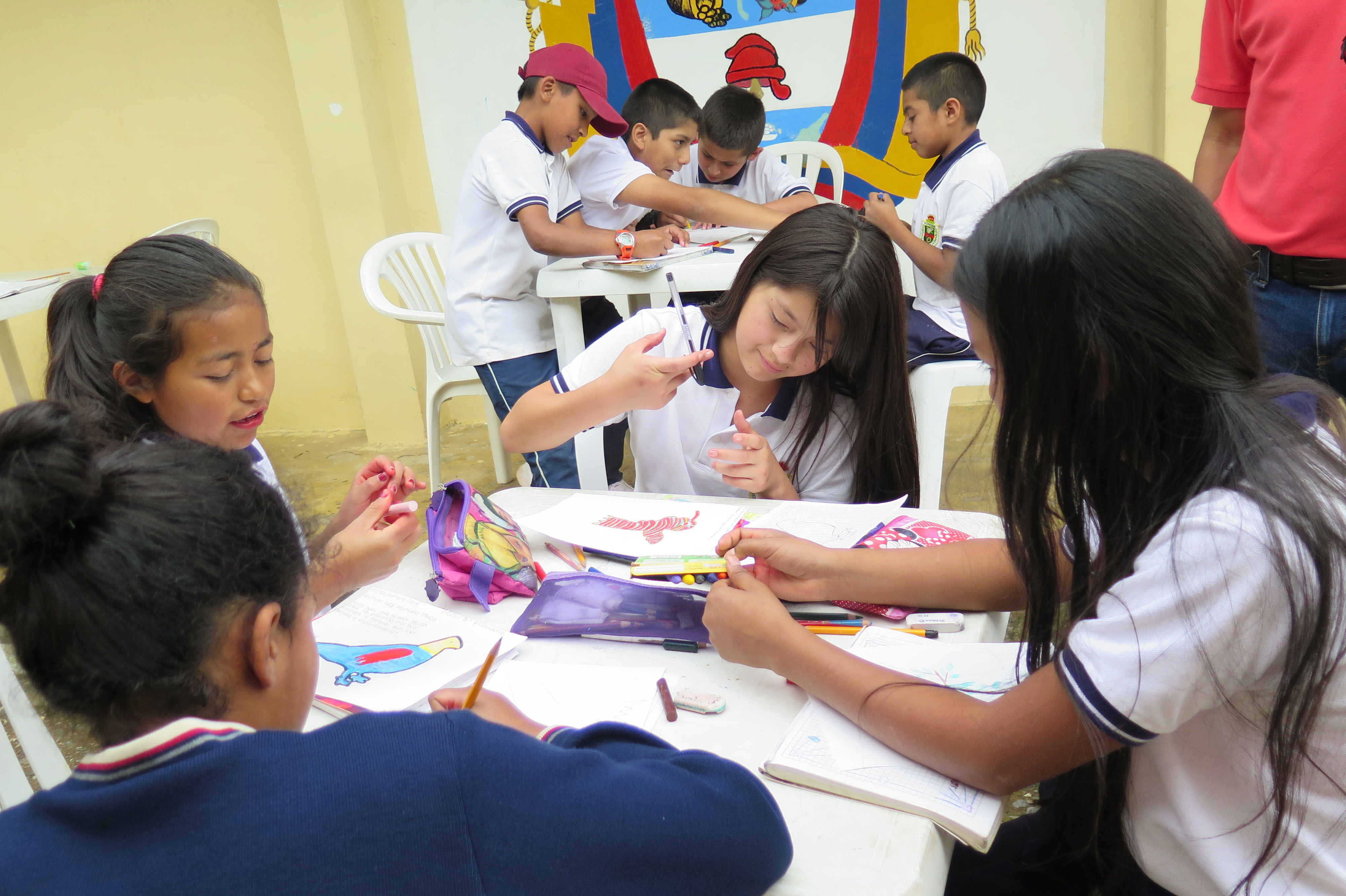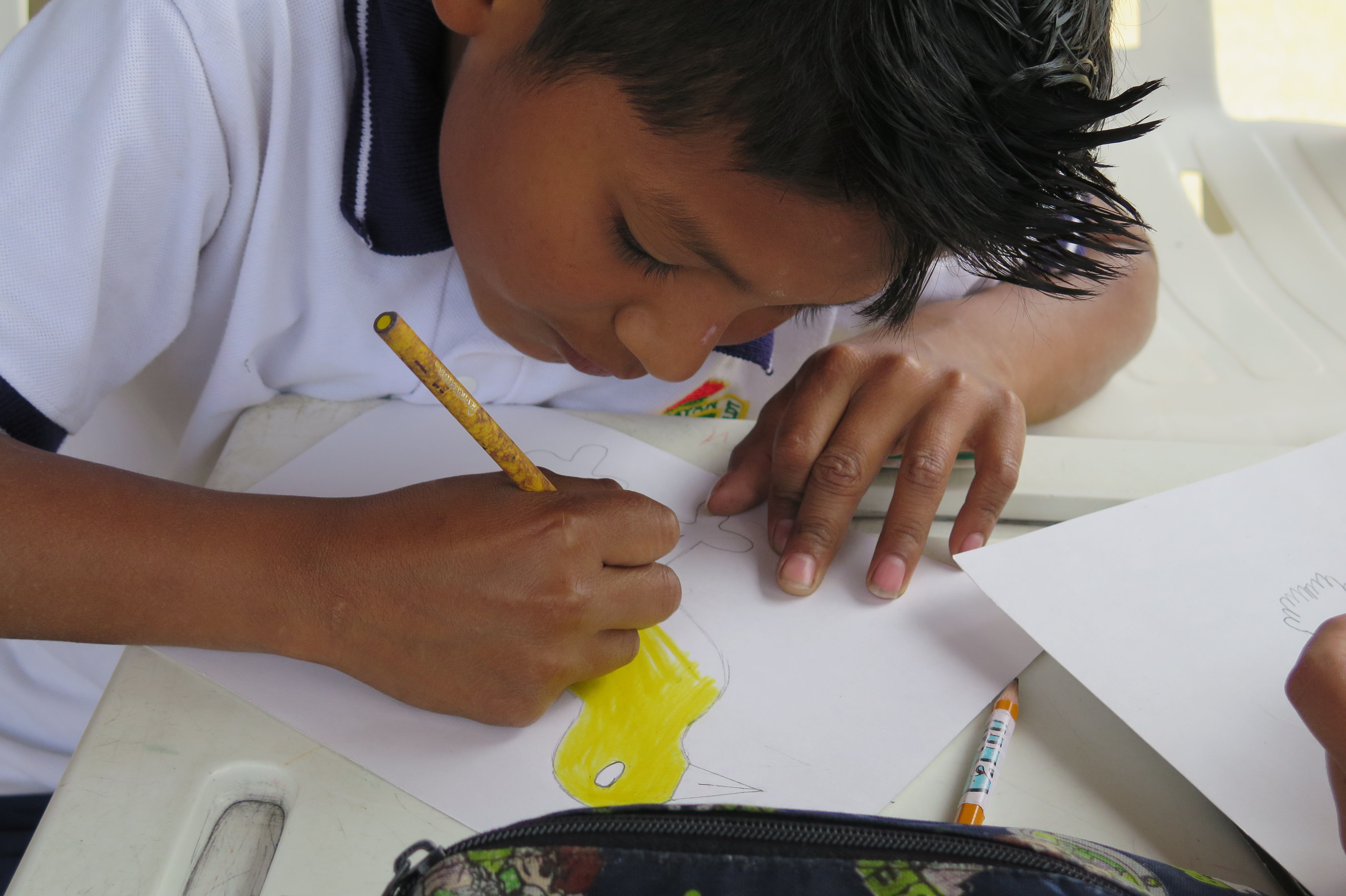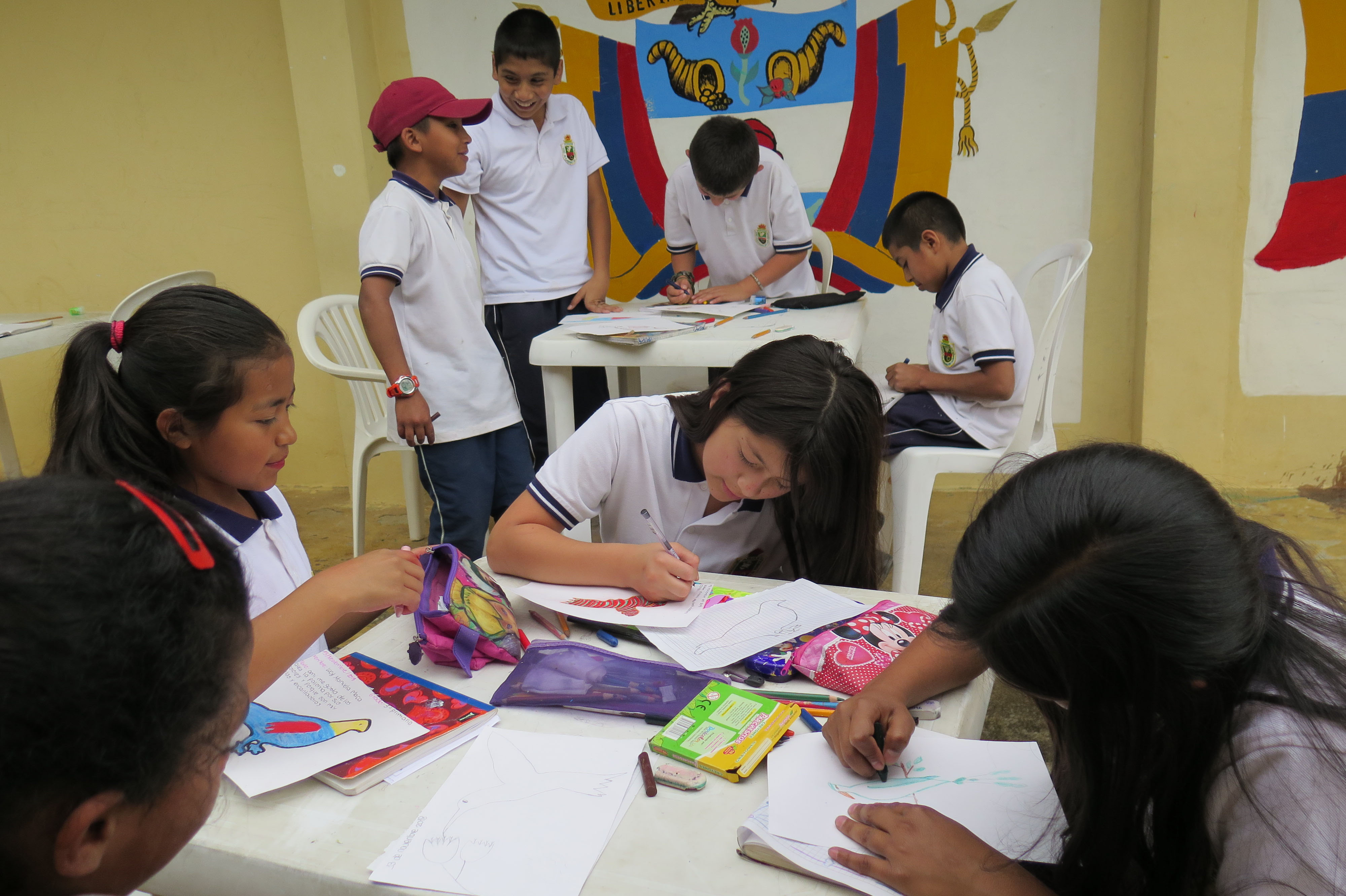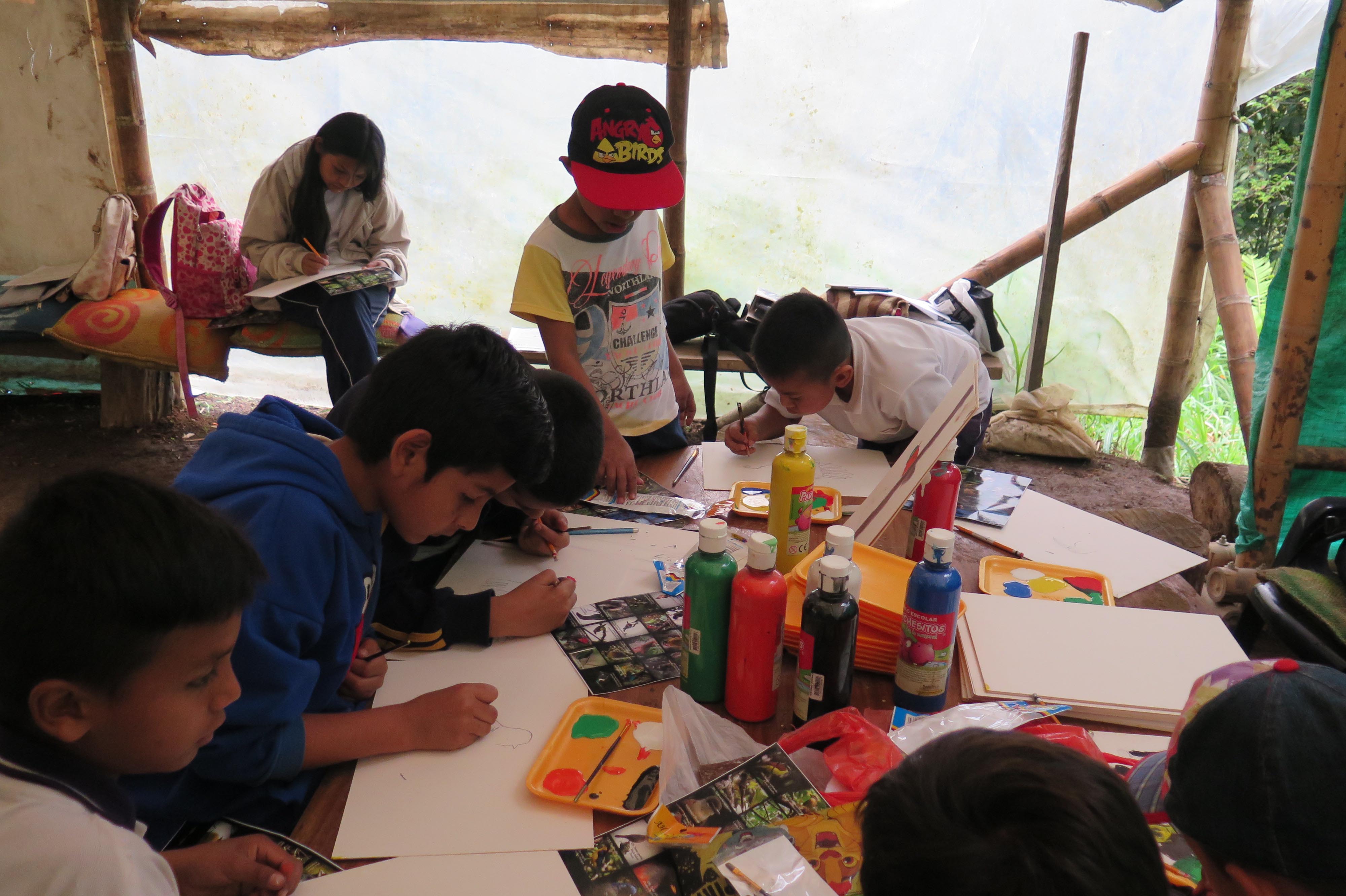 Photo ©
Jorge
Photo ©
Jorge
The Wipala Cultural Collective (Colectivo Cultural Wipala), one of the winning organizations of the Cornell Lab of Ornithology’s mini-grants for Latin America and the Caribbean, recently conducted amazing activities at the local school, El Sendero, and in nature preserve El Sendero Mágico (The Magical Trail) in Popayán, Colombia! Members of the Wipala Cultural Collective held two workshops at the school and organized field trips to the beautiful El Sendero Mágico with the kids and their teachers.
The activities were called “Amigos de las Aves” (Friends of the Birds) with the idea of expanding their environmental education program in the elementary school of El Sendero, as well as other educational institutions in Popayán, Colombia. The activities were coordinated by the Wipala Cultural Collective and supported by the Tourism Office of Popayán and the educational community of El Sendero Mágico. The goal of the activities was to create awareness in the entire community about the value of its wildlife and the importance of protecting its local birds and ecosystems in a fun and educational way.
The participants largely consisted of children and their teachers from the school of El Sendero, located in the city of Popayán (Colombia). The participants were very excited to start exploring and learning more about their local birds! It was their first time experiencing citizen science activities and realizing that they are in a key region of interest for bird conservation.
The first workshop began with the presentation and a warm welcome from the artist and cultural manager Jorge Gómez and the communicator and environmentalist Carlos Alfredo López. They were in charge of guiding the activities of “Amigos de las Aves” of the Wipala Cultural Collective! Professor Camilo Arturo, an expert of birds, spoke about the general objectives of the workshop. In addition, a girl gave a very nice welcome with a traditional song, which put all the participants and leaders of the activities in a very good mood to begin the activities.
During the introduction, the Wipala Cultural Collective (Colectivo Cultural Wipala) team also highlighted the importance of birds in the local community and especially, in their environment, since the trail El Sendero Mágico is located in the Molino river basin, which connects the Puracé natural park to the sub-Andean region of the Popayán plateau. Since numerous water sources meet in the area, the area is teeming with rich biodiversity and many different species of birds!
During the workshop, participants discussed the role that birds play in nature and the importance of their conservation for the protection of the community’s environment and quality of life. There was also an fun conversation around the topic “What are birds?” The dialog began with what the children knew about local birds, what they have observed, and what they have been told about birds. Then, using the BirdSleuth International’s materials, which were adapted specifically for the workshop, participants were able to view the characteristics of the local birds and learn about their anatomy and physiology.
It was amazing to see how the participation and interest of the children increased as they became more familiar with the workshop leaders! The participation was excellent in the second workshop as the students worked on identifying bird families through silhouettes. Biologist Camilo Arturo encouraged the students to identify traits that differed between the birds to make their identification more precise. With this knowledge, the children were able to identify the most important external parts of the birds and several main groups of birds, such as owls, hummingbirds, and many others. They were having so much fun!
Then, in order to discover the diversity of local birds and some of their characteristics, the participants played “Spying on Birds” bingo outside. The game was adapted with local birds images, which helped the kids to identify more clearly the birds present in their surroundings.
On the second day of the workshop, the students shared their knowledge about the habitat essential components: water, food, shelter, and space. They then discussed the importance of each of these different components for the local birds and other species. Afterward, they talked about the positive role of birds in plant pollination, seed dispersal, biological control of crop pests and shared their thoughts about the needs of birds to survive in nature. Ultimately, they realized that it is not easy for birds to survive!
The leaders of the workshops then gave participants some helpful tips for the bird watching outing. They discussed the appropriate type of clothing, footwear, and explained that parents and teachers must accompany the students to ensure the safety of the children. They then discussed why it is important to remain silent so as not to scare the birds and be able to observe them better. Next, the children continued to represent and draw birds according to the topics covered during the day in an fun drawing activity.
At the beginning of the birdwalk, the team reviewed certain precautions including refraining from running along step trails and staying away from slopes and clifts, remaining in silence to avoid scaring birds away, taking good care of binoculars or photography equipment and for adults to always keeping the safety of the children. Because the group was large, listening and observation groups were created—children and their parents rotated through them in small groups. In addition a observation station using a photography camera with a long lens was used to observe the birds. The children and their teachers were delighted watch birds so close!
Participants had the amusing chance to watch some Tangaras on blooming yarumos (cecropias), a great variety of other birds eating the guava (guayabos) fruits, hummingbirds sucking the nectar from flowering orchids, and colorful birds on fruit feeders with pieces of bananas. They had so much joy!
Pictures of Observations
The activities ended in a tent located in the middle of the forest, where cardboard, pencils, tempera, and vinyl were distributed so that the children could draw their impressions about the workshop activities. All, without exception, drew the birds they had managed to spot! It was wonderful to hear the workshop participants’ opinions— what the participants liked most, what they did not like, what could be improved and what they learned. Some children highlighted the importance of taking care of nature, water, trees, animals and the air. Other children expressed their joy at being able to be in a place where they can be quiet, breathe fresh air and observe many birds.
Parents and leaders of the workshops highlighted the importance of these workshops in order to help bring awareness about nature and its importance for the quality of life in the community. It is very important to highlight how committed the children were to all the workshops as well as their excitement around the topics and desire to learn more about local birds and the environment.
Some of the participants’ comments were:
“I learned that birds take care of nature by always planting trees with the seeds they eat.”
“Birds teach us to live in peace with nature.”
The workshops allowed participants and organizers alike to conclude that it is significant to promote environmental education in rural and urban schools.
As part of the art activities, Wipala brought together 13 artists from the region, who inspired by the beautiful birds as well as by the community and their children, created wonderful murals at the school. You can appreciate this amazing collective mural in the following gallery: ”
Because the artists were so inspired by the local children, culture, conservation, and birds, they also created murals on the outer walls of the classrooms and at the entrance of the Magic Trail (Sendero Mágico). You can see these images below.
The children were very happy!
Article by Ashley Calderon and Sanjna Purandar Das.
Photos are courtesy of WIPALA, Jorge Gómez and Marta del Campo.
